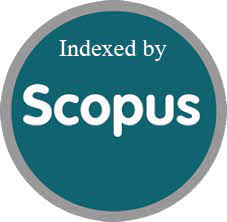Designing Breastfeeding Self Efficacy tool: Validity evaluation
DOI:
https://doi.org/10.52783/jns.v14.2124Keywords:
Breasting efficacy tool, Validation, evaluationAbstract
Background: Breastfeeding is a cultural, physiological practice that gives newborns with cardinal nutritional support, required immunity and helps in growth and developmental . It is advised by World Health Organization (WHO) and Indian Academy of Paediatrics, to breastfeed the infant exclusively for the first six months of life. Numerous papers explore the benefits of breastfeeding for infants, mothers, and society, as well as the issues and approaches to promote sustain and support breastfeeding internationally. Breastfeeding is the natural and optimal way to nourish infants. It provides the perfect balance of nutrients while also offering immunological benefits that formula feeding cannot replicate. Despite its numerous advantages, many mothers face challenges that prevent exclusive breastfeeding. These challenges are multiple, it could range from inadequate milk production, inadequate knowledge, cultural practices, reluctance of the mother, mothers’ confidence in feeding, issues in sustaining breastfeeding, maternity leave period, demands at workplace and there can be few more. Therefore, it is importance to know mothers efficacy and ability to breastfeed her infant. Mothers’ ability needs to be studied to know the issues faced by her. A measurable tool needs to be developed catering to the specific needs of the mothers, hence a specific tool relating to the Self Efficacy of the mothers was the aim of the present in done.
Methodology: The study was conducted in two phases. Phase I was completed with qualitative analysis of the in- depth interviews done with postnatal mothers who were exclusively breastfeeding. This paper was aimed at testing the tool constructed on the basis of the qualitative data. A quantitative research approach was adopted for the second phase of the study. Approval was received from IEC. Non-probability purposive sampling technique was used to recruit samples. Inclusion criteria was restricted to mothers who were feeding up to two years. Exclusion criteria developed was for the mothers who had breast engorgement , and the mothers who babies were in the NICU.
Result: Phase second involved the development of Breastfeeding Efficacy Scale; Validity of the tool was done and the S-CVI calculated was 0.87. Reliability of the tool was achieved, and the r value was calculated to be 0.91
Conclusion: The Breastfeeding Efficacy tool developed was validated tested for its reliability. The scores achieved its consistency and relevance.
Downloads
Metrics
References
James D, Lessen R. Position of the American Dietetic Association: promoting and supporting breastfeeding. J Am Diet Assoc. 2009;109(11):1926–42.
WHO/UNICEF. Global strategy for infant and young child feeding. Geneva: World Health Organization; 2003.
Socialstyrelsen [Swedish National Board of Health and Welfare]. Breastfeeding and smoking habits among parents of infants born in 2010. http://www.socialstyrelsen.se/publikationer2012/2012-8-13. Published 2012. Accessed December 4, 2013.
American Academy of Pediatrics. Breastfeeding and the use of human milk. Pediatrics. 2012;129(3):827-841. 3. WHO/UNICEF. Global strategy for infant and young child feeding. http://www.who.int/nutrition/publications/infantfeeding/
WHO/UNICEF. Baby-Friendly Hospital Initiative: revised, updated and expanded for integrated care. http://www.who.int/
Bandura A. Self-efficacy: toward a unifying theory of behavioral change. Psychol Rev. 1977;84(2):191-215.
Dennis CL. The breastfeeding self-efficacy scale: psychometric assessment of the short form. J Obstet Gynecol Neonatal Nurs. 2003;32(26):734-744. 9. Dennis CL, Heaman M, Mossman M. Psychometric testing of the Breastfeeding Self-Efficacy Scale–Short Form among adolescents. J Adolesc Health
American Academy of Pediatrics. Breastfeeding initiatives. [Accessed March 12, 2014] http:// www2.aap.org/breastfeeding/
World Health Organization. [Accessed December 10, 2014] Exclusive breastfeeding for six months best for babies everywhere. http://www.who.int/mediacentre/news/statements/2011/ breastfeeding_20110115/en/
Centers for Disease Control and Prevention. [Accessed March 12, 2014] Breastfeeding report card. http://www.cdc.gov/breastfeeding/data/reportcard.htmPublished 2013
Centers for Disease Control and Prevention. [Accessed March 12, 2014] The surgeon general’s call to action to support breastfeeding. http://www.cdc.gov/breastfeeding/promotion/ calltoaction.htmPublished 2012
Downloads
Published
How to Cite
Issue
Section
License

This work is licensed under a Creative Commons Attribution 4.0 International License.
You are free to:
- Share — copy and redistribute the material in any medium or format
- Adapt — remix, transform, and build upon the material for any purpose, even commercially.
Terms:
- Attribution — You must give appropriate credit, provide a link to the license, and indicate if changes were made. You may do so in any reasonable manner, but not in any way that suggests the licensor endorses you or your use.
- No additional restrictions — You may not apply legal terms or technological measures that legally restrict others from doing anything the license permits.










